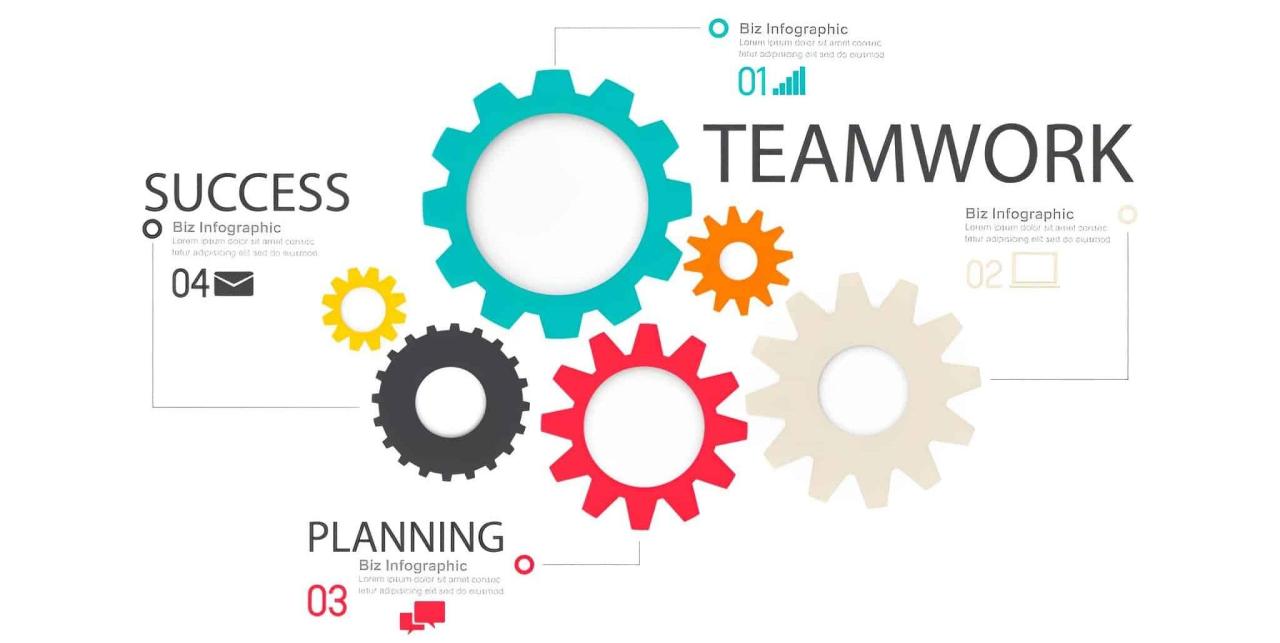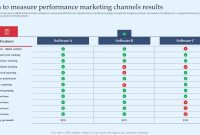Top Tools for Managing Marketing Teams are essential in today’s fast-paced business landscape, where efficient collaboration and streamlined processes can make or break a campaign. These tools not only help in organizing tasks but also foster communication among team members, ensuring that everyone is aligned with the overarching marketing goals. By leveraging technology, teams can enhance productivity, optimize workflows, and ultimately drive better results.
From project management to communication solutions, the variety of tools available today caters to different needs of marketing teams. In this comprehensive overview, we will explore the types, key features, and popular options, providing insights into how they can significantly elevate the management of marketing teams.
Introduction to Marketing Team Management Tools

In today’s fast-paced digital landscape, managing a marketing team effectively is crucial for achieving success. The right tools can streamline processes, enhance communication, and empower teams to work more efficiently. As marketing strategies become more complex, the necessity for robust management tools only grows, providing a foundation for collaboration and innovation. These tools are designed to support a variety of functions that are essential for smooth operations within marketing teams.
Key functionalities that should be prioritized include project management, collaboration features, performance tracking, and analytics capabilities. By integrating technology into their workflows, marketing teams can not only improve their productivity but also gain valuable insights that drive strategic decision-making.
Key Functionalities of Marketing Management Tools, Top Tools for Managing Marketing Teams
A comprehensive marketing management tool should encompass a range of functionalities to cater to the diverse needs of teams. Understanding these features can help organizations select the best tools that align with their objectives.
- Project Management: Tools must provide functionality for planning, scheduling, and tracking projects. This enhances visibility into project timelines and resource allocation.
- Collaboration Features: Effective communication channels facilitate teamwork, allowing team members to share ideas, documents, and feedback in real-time.
- Performance Tracking: Monitoring KPIs and metrics helps teams assess their effectiveness and make data-driven adjustments as necessary.
- Analytics Capabilities: Advanced analytics allow teams to derive insights from campaigns, enabling informed decisions and strategic planning.
- Integration with Other Tools: Seamless integration with CRM, social media, and email marketing platforms enhances overall efficiency and data coherence.
By leveraging these functionalities, marketing teams can transform their workflows, making them more agile and responsive to market changes. The effective use of technology not only boosts productivity but also fosters a culture of continuous improvement and adaptability among team members.
“The right tools empower marketing teams to achieve their goals efficiently and effectively, aligning efforts with business objectives.”
Types of Marketing Team Management Tools
Marketing teams today have a variety of tools at their disposal to streamline processes, enhance collaboration, and ultimately drive better results. Understanding the different categories of these tools is crucial for optimizing team effectiveness and achieving marketing goals. From project management solutions to communication platforms, each tool serves a distinct purpose that contributes to the overall success of marketing initiatives.
Project Management Tools
Project management tools are integral to keeping marketing teams organized and on track. These tools help manage timelines, allocate resources, and monitor the progress of projects. Key features often include task assignment, progress tracking, deadline setting, and reporting capabilities. By using these tools, teams can ensure that everyone is on the same page and that tasks are completed efficiently.
- Trello: A visual tool that employs boards, lists, and cards to organize tasks. It is highly customizable and allows for easy drag-and-drop functionality.
- Asana: This tool offers a robust platform for task management, including timelines, calendars, and project templates, enabling users to visualize their workflow.
- Monday.com: A versatile work operating system that allows teams to plan, execute, and track projects in a visually appealing format.
- Wrike: Features advanced reporting tools, time tracking, and integrations with various other software, making it suitable for larger teams with complex needs.
Communication and Collaboration Tools
Effective communication and collaboration are vital for marketing teams, especially when dealing with remote or hybrid working environments. Tools in this category foster real-time communication, file sharing, and collaborative project work. They help break down silos and improve overall team cohesion.
- Slack: A messaging platform that allows for organized channels, direct messages, and integration with various apps, facilitating seamless communication among team members.
- Microsoft Teams: Combines chat, video meetings, and file collaboration in one platform, making it a comprehensive tool for team collaboration.
- Google Workspace: Offers applications like Google Docs, Sheets, and Drive that enable real-time collaboration on documents and easy file sharing across teams.
- Zoom: Provides reliable video conferencing capabilities, essential for virtual meetings, webinars, and team check-ins.
“The right tools can significantly enhance communication and collaboration, ultimately driving better results for marketing teams.”
Key Features to Look for in These Tools
When it comes to managing a marketing team, the right tools can make all the difference. Effective marketing team management tools not only streamline processes but also enhance collaboration and productivity. It’s essential to identify features that will support your team’s unique needs and workflows, ensuring that everyone is on the same page and working towards common goals.Selecting the right marketing team management tool requires careful consideration of several key features that can significantly impact the efficiency and effectiveness of your team.
Below are some critical features you should look for when evaluating potential tools.
Essential Features for Marketing Team Management Tools
A well-rounded marketing team management tool should incorporate various features that address different aspects of project and team management. Here’s a summary of key features that can enhance your team’s performance:
| Feature | Description |
|---|---|
| Task Management | Effective task management capabilities allow teams to assign, track, and prioritize tasks easily, ensuring that nothing falls through the cracks. |
| Collaboration Tools | These include features like comments, file sharing, and real-time collaboration to facilitate communication and teamwork across the team. |
| Reporting and Analytics | Robust reporting features help teams analyze performance metrics, assess campaign effectiveness, and make data-driven decisions for future projects. |
| Integration Capabilities | Integration with other tools and applications (like CRM systems, email marketing platforms, etc.) is crucial for a seamless workflow and data sharing. |
| User Experience | A user-friendly interface and intuitive navigation can drastically reduce the learning curve, enabling teams to adopt the tool quickly and effectively. |
User experience plays a pivotal role in the effectiveness of marketing management tools. A tool that is difficult to navigate or confusing can lead to frustration and decreased productivity among team members. Ensuring that the selected tool offers a clean, intuitive interface will facilitate quick onboarding and adoption, allowing teams to focus on what they do best—creating effective marketing strategies and executing campaigns.
Popular Tools for Marketing Team Management
In the dynamic landscape of marketing, effective team management is crucial for achieving success. With numerous tools available in the market, it’s essential to identify which ones can best streamline workflows, enhance collaboration, and improve productivity. This section delves into some of the most popular tools for managing marketing teams, offering insights into their unique features, benefits, and real-world applications.
Comparative Analysis of Asana, Trello, and Monday.com
Asana, Trello, and Monday.com are three widely recognized tools that cater to different aspects of project and team management. Each platform offers distinct features tailored to facilitate collaboration and enhance project tracking.Asana is known for its robust project management capabilities, allowing teams to create tasks, assign responsibilities, set deadlines, and monitor progress through various views, including lists and boards. It integrates seamlessly with many other tools, making it a versatile choice for teams looking to manage complex projects.Trello, with its card-based interface, is ideal for visual thinkers.
It provides a simple yet effective way to organize tasks using boards and cards, facilitating a straightforward workflow. It’s especially popular among smaller teams or those just starting with project management tools due to its user-friendly design.Monday.com stands out with its highly customizable workflows and multiple views, including Kanban, calendar, and timeline. It is suitable for teams that require a more tailored approach to project management, allowing users to build workflows that reflect their specific needs and preferences.The following list highlights the pros and cons of each tool, providing a clearer perspective on their functionalities:
- Asana
- Pros: Comprehensive project management features, extensive integrations, user-friendly interface.
- Cons: Can be overwhelming for new users, advanced features may require paid plans.
- Trello
- Pros: Simple interface, highly visual, great for smaller teams and straightforward projects.
- Cons: Limited features for complex project management, lacks advanced reporting tools.
- Monday.com
- Pros: Highly customizable, multiple project views, suitable for larger teams and diverse workflows.
- Cons: Higher learning curve, can be more expensive than competitors.
Success Stories of Companies Using These Tools
Various organizations have successfully implemented these tools to improve their marketing processes. For instance, a leading eCommerce brand utilized Asana to streamline its content marketing workflow. By centralizing task assignments and deadlines, the team was able to boost productivity by 30%, reducing the time taken to launch campaigns.Another example includes a startup that adopted Trello for managing its social media marketing efforts.
The visual task management helped the team easily track content creation and approval processes, resulting in a 25% increase in their social media engagement metrics.Lastly, a large enterprise leveraged Monday.com to manage cross-departmental projects, enhancing collaboration between marketing and sales teams. This integration led to improved communication and a 40% reduction in project turnaround times.By examining these tools and their real-world applications, marketing teams can make informed decisions about which tool best suits their needs and enhances their operational efficiency.
Implementation Strategies for Marketing Tools
Successfully implementing new marketing management tools requires a structured approach. The process not only enhances the tool’s effectiveness but also ensures a seamless transition for the team involved. This section breaks down the best practices for introducing these tools, highlights strategies for onboarding, and provides metrics to gauge their impact post-implementation.
Step-by-Step Guide for Implementing New Marketing Management Tools
Implementing a new marketing management tool involves several key steps to ensure that it aligns with your team’s needs and operates effectively. The following guide Artikels the essential phases of this process:
- Define Goals: Clearly Artikel the objectives for adopting the new tool, whether it’s improving collaboration, tracking marketing performance, or enhancing project management.
- Assess Needs: Evaluate your team’s requirements, including current workflow challenges, desired features, and integration capabilities.
- Research Options: Investigate different tools available in the market. Consider demos and reviews to find the best fit for your organization.
- Trial Phase: Implement a trial version of the selected tool with a small team to test functionality and gather feedback.
- Gather Feedback: Collect input from users during the trial phase to identify any issues or necessary adjustments before full-scale implementation.
- Full Rollout: Once feedback is addressed, proceed with the full deployment of the tool across the team.
- Continuous Support: Ensure ongoing support and resources are available for team members to maximize the tool’s usage.
Best Practices for Onboarding Team Members to New Software
Effective onboarding is crucial to ensuring that team members are comfortable and proficient with the new marketing management tool. The following best practices can facilitate a smooth transition:
- Structured Training Sessions: Organize comprehensive training sessions that cover the tool’s features, functionalities, and best practices tailored to different team roles.
- Provide Resources: Create user guides, video tutorials, and FAQs to serve as reference materials for team members as they navigate the new tool.
- Encourage Peer Learning: Foster an environment where team members can share tips and tricks with each other to enhance collective knowledge and usage.
- Establish a Feedback Loop: Encourage team members to provide ongoing feedback about their experiences with the tool. This can highlight areas needing improvement or additional training.
- Set Clear Expectations: Define roles and responsibilities clearly so that team members understand how their usage of the tool contributes to broader team objectives.
Measuring the Effectiveness of the Tools Post-Implementation
Once the marketing management tool is implemented, it is essential to assess its effectiveness in meeting the established goals. Here are some key points to consider when measuring impact:
- Define Success Metrics: Identify and quantify metrics that will demonstrate the software’s performance against your initial goals, such as improved project turnaround times or increased campaign ROI.
- Regular Reviews: Conduct periodic evaluations to discuss the tool’s performance with the team, analyzing both qualitative and quantitative data.
- Monitor User Engagement: Track how frequently team members use the tool and identify any patterns in usage that may indicate areas for improvement.
- Solicit Ongoing Feedback: Use surveys or informal check-ins to continually gather user feedback, allowing for adjustments to optimize the tool’s effectiveness.
- Benchmark Against Previous Performance: Compare results before and after implementation to assess whether the new tool has positively impacted team productivity and project outcomes.
Challenges in Managing Marketing Teams with Tools
Managing marketing teams using various tools comes with its own set of challenges, which can sometimes hinder productivity and collaboration. Understanding these challenges is essential to ensure that the tools serve their intended purpose, providing seamless support to the marketing efforts of the team.Despite the advantages that management tools bring, teams often encounter difficulties when integrating these systems into their workflows.
Common issues include tool overload, resistance to change, inadequate training, and data silos. Recognizing these challenges allows teams to strategically address them and optimize their use of management tools.
Common Challenges and Solutions
The following table Artikels some of the prevalent challenges marketing teams face while using management tools, along with potential solutions to overcome these hurdles.
| Challenge | Potential Solution |
|---|---|
| Tool Overload | Consolidate tools into a single platform that offers multiple functionalities, reducing the number of separate tools required. |
| Resistance to Change | Involve team members in the selection process and highlight the benefits of new tools through training sessions and demonstrations. |
| Inadequate Training | Implement comprehensive onboarding programs and provide ongoing training resources to ensure team members feel confident using the tools. |
| Data Silos | Encourage cross-departmental collaboration and integrate tools that facilitate data sharing and communication across teams. |
| Difficulty in Measuring ROI | Leverage analytics features within tools and set predefined metrics to measure success and make data-driven decisions. |
“The efficiency of marketing teams can significantly improve when challenges are actively addressed and solutions are implemented.”
Future Trends in Marketing Team Management Tools: Top Tools For Managing Marketing Teams
As marketing evolves, so do the tools that help manage marketing teams effectively. The future of marketing team management tools is leaning heavily towards integrating advanced technologies and adapting to the dynamic needs of marketing professionals. In this segment, we explore the emerging trends in marketing team management tools, particularly focusing on how artificial intelligence (AI) is reshaping these tools and what the next five years may hold for their development.
Emerging Trends in Marketing Team Management Tools
Innovations in technology are driving significant changes in the landscape of marketing team management tools. The following trends are gaining traction and will likely define the future of these tools:
- Integration of AI and Machine Learning: AI is becoming a cornerstone in enhancing automation, data analytics, and predictive insights, enabling teams to make data-driven decisions quickly.
- Collaboration Tools with Enhanced Features: Tools that foster real-time collaboration are growing in importance, making it easier for teams to work together, regardless of their physical location.
- Personalization and Customization: Future tools will increasingly offer tailored solutions to fit the unique workflows and processes of individual teams, ensuring better alignment with their specific goals.
- Data Privacy and Security Features: With increasing concerns around data security, tools are anticipated to integrate more robust security measures and compliance features to protect sensitive information.
- Mobile Accessibility: As remote work becomes the norm, there will be a shift towards mobile-friendly applications that allow team members to manage tasks and collaborate on-the-go.
Impact of Artificial Intelligence on Marketing Tools
AI technology is significantly influencing how marketing team management tools operate, creating efficiencies that were previously unattainable. The capabilities of AI in this realm include:
- Automation of Repetitive Tasks: AI can automate routine tasks such as scheduling, reporting, and data entry, freeing up time for creative and strategic thinking.
- Advanced Analytics: AI-driven analytics can uncover deeper insights from data, helping teams to identify trends and optimize campaigns effectively.
- Predictive Analytics: Tools equipped with AI can forecast marketing outcomes based on historical data, allowing teams to strategize proactively rather than reactively.
- Natural Language Processing: AI tools can analyze customer feedback and sentiment through text, enabling teams to tailor their messaging and improve customer engagement.
Forecast for Tool Development in the Next Five Years
The next five years are likely to witness remarkable transformations in marketing team management tools, driven by ongoing advancements in technology and shifts in market demands. Expected developments include:
- Greater Emphasis on User Experience: Tools will focus on enhancing user interfaces and experiences, making them more intuitive and user-friendly for diverse team members.
- Integration of Augmented Reality (AR) and Virtual Reality (VR): Marketing tools may incorporate AR and VR features for immersive campaign experiences, offering new avenues for customer engagement.
- Increased AI Features: Continued evolution in AI capabilities will result in even smarter tools that adapt based on user behavior and preferences, creating a more personalized experience.
- Collaboration with Other Technologies: Future tools will likely integrate seamlessly with other technologies, such as CRM systems and social media platforms, creating a cohesive marketing ecosystem.
- Sustainability Features: As environmental concerns rise, tools may evolve to help marketing teams track and report on sustainability efforts within campaigns.
Customizing Tools for Specific Marketing Needs
In the dynamic landscape of marketing, one size rarely fits all. Customizing tools to cater to the unique needs of different marketing teams can significantly enhance productivity and effectiveness. Tailoring tools not only optimizes workflows but also ensures that teams can leverage technology in a manner that aligns with their specific goals and challenges.Flexibility and adaptability are crucial when selecting marketing tools.
The right tool should not only meet current requirements but also evolve as the team and the market change. Customization capabilities allow teams to modify features, interfaces, and functionalities to better suit their processes, thereby maximizing the value derived from these tools.
Successful Customization Examples
Customization can manifest in various forms, from interface modifications to workflow enhancements. Here are a few successful examples:
- Dashboard Personalization: Marketing teams may choose to customize their dashboards to highlight specific KPIs that matter most to them. For instance, a social media team might prioritize engagement metrics, whereas a content marketing team may focus on page views and conversion rates.
- Integration with Other Tools: Many marketing teams find success by integrating their primary marketing tool with CRM platforms or analytics tools. This ensures a seamless flow of data between systems, allowing for more informed decision-making. For example, a team using HubSpot can connect it with Salesforce to have a unified view of customer interactions.
- Automated Workflows: Customizing tools to automate repetitive tasks can save time and reduce the chance of human error. For instance, a marketing automation tool can be configured to send out emails based on user behavior, such as cart abandonment, which has proven effective in increasing conversion rates.
- Custom Reporting: Tailoring reporting features to generate specific insights relevant to a marketing campaign is another successful strategy. A team might create custom reports that analyze data from various channels to assess campaign performance holistically.
“Customization transforms tools from generic solutions into tailored assets that drive marketing success.”
The importance of flexibility in tool selection cannot be overstated. A marketing team must choose tools that allow for adjustments over time as new strategies emerge or as business goals shift. This adaptability ensures that the team can remain agile and responsive to changes in the marketplace and consumer behavior, ultimately leading to more successful marketing outcomes.



